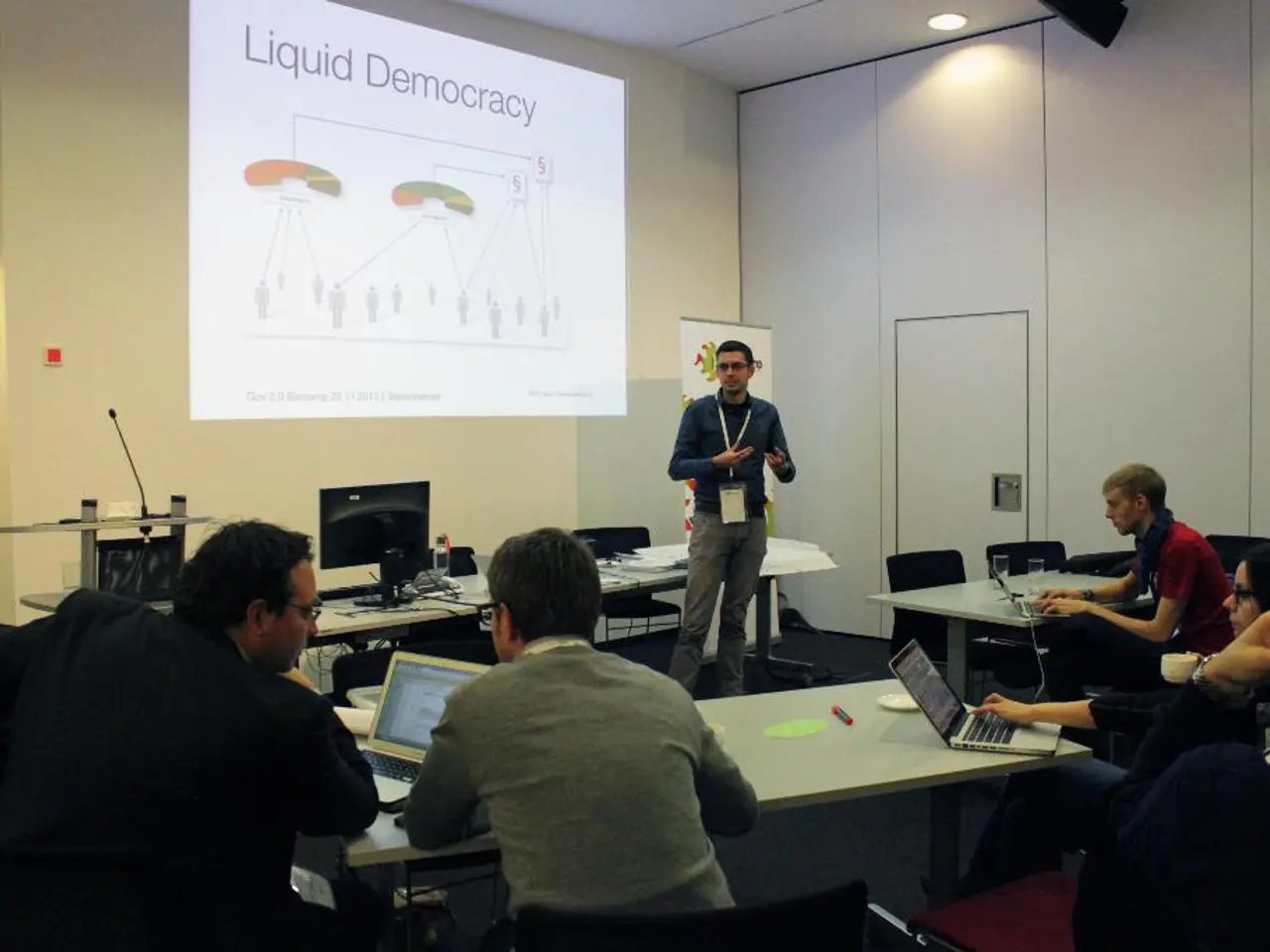Brad Booth, head of NLM Photonics, featured in an interview series
NLM Photonics Revolutionizes AI Data Centers with Energy-Efficient Photonics
NLM Photonics, a pioneering company in the field of photonics, is making significant strides in reducing energy consumption in AI data centers. The company's organic electro-optic (OEO) materials are enabling higher bandwidth data transmission with significantly lower power requirements, addressing the extraordinary bandwidth demands driven by large language models (LLMs) and AI expansion.
The OEO materials improve data center efficiency by:
- Enabling high-speed modulation with lower electrical power compared to traditional inorganic materials.
- Supporting coherent optical data transmission, which increases fiber capacity and reduces the need for power-intensive electronic signal processing.
- Providing solutions that require minimal process disruption in existing data center infrastructure, facilitating easier adoption and energy savings.
- Addressing sustainability by lowering the overall operational power demands of AI and communication systems reliant on photonics.
NLM's solutions have achieved record electro-optic responsivity for applications that require frequencies in the terahertz range. This groundbreaking technology is critical in making AI data centers more energy efficient by boosting data throughput while reducing electrical power consumption in optical communications.
Brad Booth, CEO of NLM Photonics, brings a wealth of experience in communications and connectivity to the company. With a background in data center evolution, having held leadership roles at Microsoft Azure, Meta, Dell, and Intel, Booth is driving NLM Photonics towards its goal of fundamentally shifting the photonics industry's trajectory to deliver better performance with less energy consumption.
NLM's technology is well-suited for satellite and space-based systems due to its small size, weight, and power efficiency. The company's technology can be tailored for specific verticals, such as telecom and defense, because one size doesn't fit all.
The Selerion-HTX platform from NLM Photonics delivers more bandwidth with less energy, enabling smaller, more efficient photonic circuits for sustainable, high-performance computing. The Selerion-BHX, a new product from NLM Photonics, is designed for ultra-high bandwidth and small form-factor applications like optical I/O and satellite communications.
NLM is collaborating with a network of partners across the photonics and semiconductor ecosystem, including Advanced Micro Foundry (AMF), Enosemi, and Centera. The company is also working with standards bodies to ensure compatibility with existing ecosystems and standard silicon fabs.
NLM's technology does not require special tooling for manufacturing and is a post-manufacturing step that does not disrupt standard manufacturing flows. The company's materials have shown promising results in quantum applications, delivering clean, stable signals even at cryogenic temperatures.
NLM is also working with researchers from universities like UW and ETH Zurich on new developments in electro-optic materials. The company has received government grants with NASA and the Air Force (AFWERX) due to the benefits of their technology.
Outside of the lab, Brad Booth and his wife live sustainably, raising livestock and collecting rainwater off the grid. Booth's career has primarily focused on communications and connectivity, including working on telephone handsets at Bell-Northern Research and network architectures at Microsoft.
NLM's new materials operate more efficiently and in a smaller footprint than traditional silicon photonics, allowing for higher bandwidth, lower drive voltages, and more photonic integrated circuits (PICs) per wafer. This advancement is expected to drive significant improvements in data center efficiency and sustainability.
References:
- Optics InfoBase
- Semiconductor Today
- NLM Photonics Press Release
- NLM Photonics' advancements in electro-optic materials, such as the Selerion-HTX platform, not only provide more bandwidth with less energy but also contribute to the development of sustainable, high-performance computing in fields like AI, finance, and technology.
- The collaboration between NLM Photonics and researchers from universities like UW and ETH Zurich, along with partnerships across the photonics and semiconductor ecosystem, underscores the company's commitment to fostering innovation in photonics, AI, and related industries.




